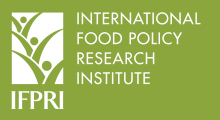Resource information
The organization of maize marketing in Zambia reflects the main objective of the system—supplying urban areas with cheap food. Maize purchased from farmers is sold only to the major milling companies, all of which are located in urban centers. The marketing subsidy, reflected in the low sale price to these millers, is in effect a subsidy to mainly urban consumers. Rural retailers are allowed an explicit markup to cover transport costs back to rural areas. However, to the extent that the price of milled maize purchased in urban areas incorporates not only an explicit transport subsidy but also storage and often milling subsidies as well, the rural consumers of the purchased meal may also be deriving some price advantage. This is of course in addition to the implicit subsidy via a somewhat lower domestic price and inflated exchange rate that has remained part of the situation during most of the past twenty years. It should be noted that this analysis represents the situation only up to the mid-1980s, prior to the recent inflationary and exchange rate changes.


